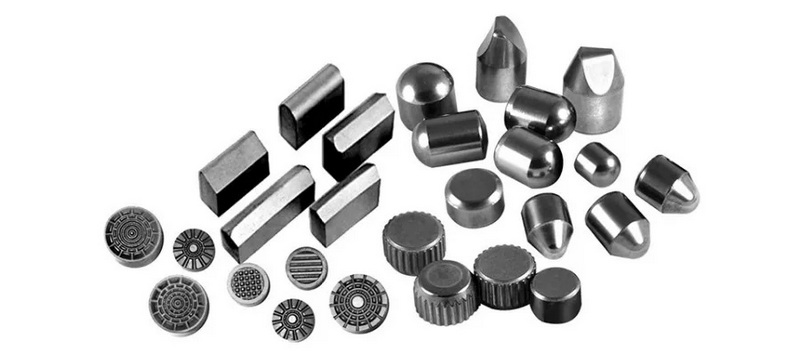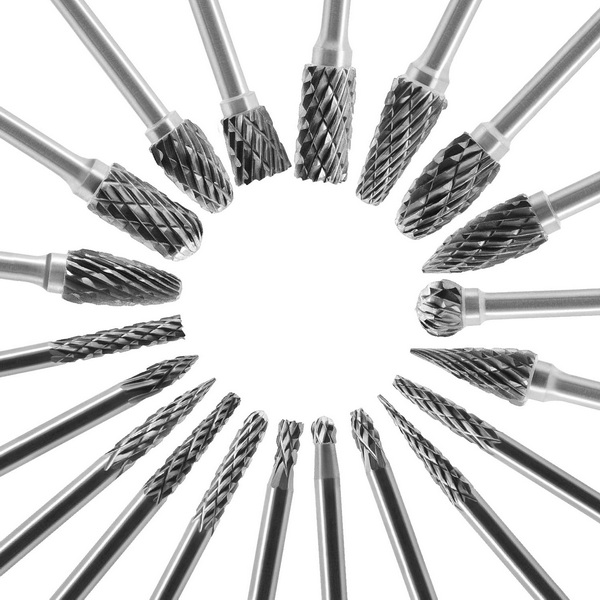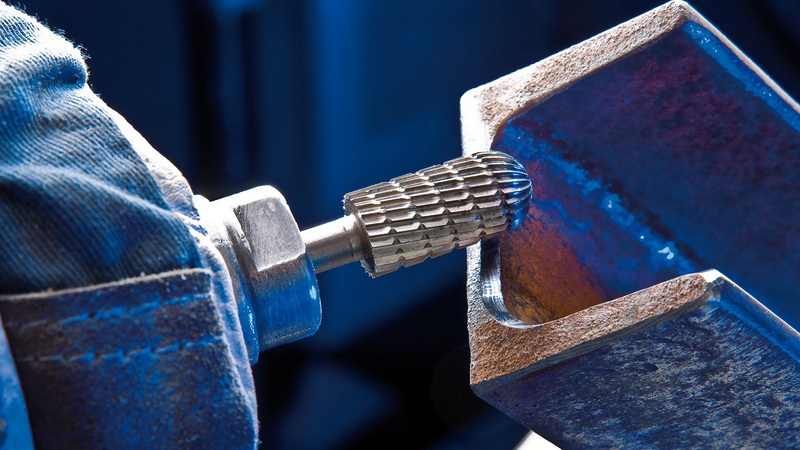Content Menu
● Introduction to Tungsten Carbide
>> Physical Properties
● Strength and Rigidity
>> Applications
>> Medical Applications
>> Jewelry Applications
● Comparison with Steel
● Comparison with Other Hard Materials
>> Environmental Impact
>> Recycling and Sustainability
● Technological Advancements
>> Future Applications
● Conclusion
● Frequently Asked Questions
>> 1. What is Tungsten Carbide?
>> 2. How is Tungsten Carbide Produced?
>> 3. What are the Key Properties of Tungsten Carbide?
>> 4. What are the Common Applications of Tungsten Carbide?
>> 5. Is Tungsten Carbide Recyclable?
● Citations:
Tungsten carbide is renowned for its exceptional hardness and durability, making it a crucial material in various industrial applications. However, the question remains: is tungsten carbide a strong metal? To answer this, we need to delve into its properties, applications, and comparisons with other metals.

Introduction to Tungsten Carbide
Tungsten carbide is a compound made from tungsten and carbon atoms. It is produced through a process known as powder metallurgy, where tungsten carbide powder is mixed with a metallic binder, such as cobalt, and then sintered at high temperatures to form a solid, hard composite.
Physical Properties
Tungsten carbide is extremely hard, ranking about 9 to 9.5 on the Mohs scale, which is second only to diamond. It has a high melting point of 2,870°C (5,200°F) and a boiling point of 6,000°C (10,830°F). Its Young's modulus ranges from 530 to 700 GPa, indicating high rigidity.
Strength and Rigidity
Tungsten carbide is not the strongest metal in terms of tensile strength, with an ultimate tensile strength of about 344 MPa. However, it has an ultimate compressive strength of approximately 2.7 GPa, making it highly resistant to compression. Its rigidity is significantly higher than steel, being two to three times as rigid.
Applications
Tungsten carbide is widely used in cutting tools, drill bits, and wear-resistant components due to its hardness and durability. It is also used in the automotive, aerospace, and medical fields. For instance, in the automotive industry, tungsten carbide is used in engine components and wear parts to enhance performance and longevity. In aerospace, its high strength-to-weight ratio and resistance to extreme temperatures make it ideal for rocket nozzles and other critical components.
Medical Applications
In the medical field, tungsten carbide is used in surgical instruments and implants due to its biocompatibility and resistance to corrosion. Its hardness ensures that surgical tools maintain their sharpness and effectiveness over time.
Jewelry Applications
Tungsten carbide is also used in jewelry, particularly in wedding bands, due to its hardness and resistance to scratches. However, it is brittle and can crack under sudden impact.
Comparison with Steel
While tungsten carbide is harder and more wear-resistant than steel, it is not stronger in terms of tensile strength. Steel blades wear down faster than tungsten carbide blades, especially in abrasive conditions. However, steel is more ductile and can absorb impacts better than tungsten carbide, which is brittle and prone to cracking under sudden stress.

Comparison with Other Hard Materials
Tungsten carbide is often compared to other hard materials like titanium carbide and silicon carbide. Titanium carbide has similar hardness but is more expensive and less commonly used. Silicon carbide, while also very hard, is more brittle and used primarily in ceramic applications.
Environmental Impact
The production of tungsten carbide involves the use of tungsten, which is often sourced from conflict zones. Efforts are being made to ensure responsible sourcing and recycling of tungsten carbide to reduce its environmental impact.
Recycling and Sustainability
Recycling tungsten carbide is crucial for sustainability. Worn-out tools and scrap material can be reclaimed and reused, reducing waste and conserving resources. This not only helps in minimizing environmental impact but also ensures a stable supply chain for this valuable material.
Technological Advancements
Recent advancements in technology have improved the production and application of tungsten carbide. For example, advancements in sintering techniques have allowed for more precise control over the microstructure of tungsten carbide, enhancing its properties for specific applications.
Future Applications
As technology continues to evolve, tungsten carbide is expected to play a significant role in emerging industries such as renewable energy and advanced manufacturing. Its unique properties make it an ideal material for components in wind turbines and other high-performance machinery.
Conclusion
Tungsten carbide is not technically the strongest metal in terms of tensile strength, but its exceptional hardness, rigidity, and wear resistance make it invaluable for applications requiring durability and precision. Its use in industrial tools, automotive parts, and even jewelry underscores its versatility and strength in specific contexts.

Frequently Asked Questions
1. What is Tungsten Carbide?
Tungsten carbide is a compound made from tungsten and carbon, known for its hardness and durability. It is used in cutting tools and wear-resistant components.
2. How is Tungsten Carbide Produced?
Tungsten carbide is produced through powder metallurgy, involving the sintering of tungsten carbide powder with a metallic binder like cobalt.
3. What are the Key Properties of Tungsten Carbide?
Tungsten carbide is extremely hard (9-9.5 on the Mohs scale), has high compressive strength, and excellent wear resistance. It also has a high melting point and thermal conductivity.
4. What are the Common Applications of Tungsten Carbide?
Tungsten carbide is used in cutting tools, drill bits, and wear-resistant components. It is also used in the automotive, aerospace, and medical industries.
5. Is Tungsten Carbide Recyclable?
Yes, tungsten carbide can be recycled. Worn-out tools and scrap material can be reclaimed and reused, reducing waste and conserving resources.
Citations:
[1] https://carbideprocessors.com/pages/carbide-parts/tungsten-carbide-properties.html
[2] https://passionblade.com/is-tungsten-carbide-stronger-than-steel/
[3] https://www.linkedin.com/pulse/applications-tungsten-carbide-zzbettercarbide
[4] https://www.istockphoto.com/photos/tungsten-carbide
[5] https://www.alamy.com/stock-photo/tungsten-carbide.html
[6] https://www.retopz.com/57-frequently-asked-questions-faqs-about-tungsten-carbide/
[7] https://www.thermalspray.com/questions-tungsten-carbide/
[8] https://en.wikipedia.org/wiki/Tungsten_carbide
[9] https://eternaltools.com/blogs/tutorials/tungsten-carbide-an-informative-guide
[10] https://shop.machinemfg.com/the-pros-and-cons-of-tungsten-carbide-a-comprehensive-guide/
[11] https://www.vedantu.com/chemistry/tungsten-carbide
[12] http://machinetoolrecyclers.com/rita_hayworth.html
[13] https://www.aemmetal.com/news/tungsten-vs-tungsten-carbide-guide.html
[14] https://www.chemicalbook.com/article/tungsten-carbide-general-properties-industrial-preparation-industrial-applications-and-uses.htm
[15] https://www.allied-material.co.jp/en/techinfo/tungsten_carbide/features.html
[16] https://www.tungco.com/insights/blog/5-tungsten-carbide-applications/
[17] https://periodictable.com/Elements/074/pictures.html
[18] http://www.tungsten-carbide.com.cn
[19] https://www.freepik.com/free-photos-vectors/tungsten-carbide
[20] http://www.chinatungsten.com/Tungsten-Carbide/Properties-of-Tungsten-Carbide.html
[21] http://picture.chinatungsten.com/list-18.html
















